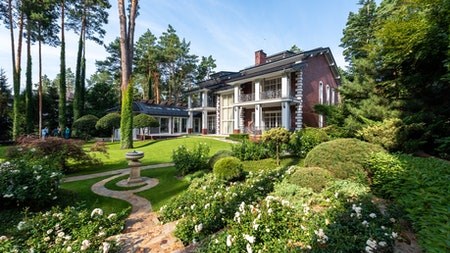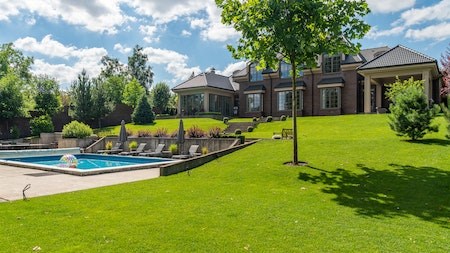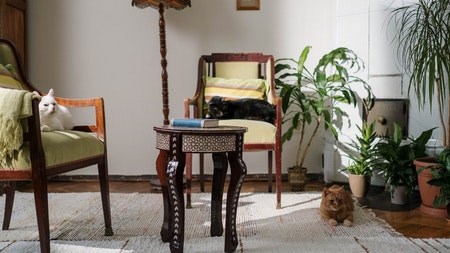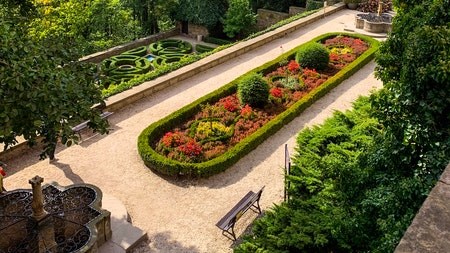Meadow style gardening looks to the future but has its roots in the past and takes its inspiration from nature.
The world’s wild flowers are rich in tradition, history and the romance of yesteryear. However, according to Life is a Garden, they are in constant danger of disappearing. This is because of urban development, man’s ignorance, greed and destruction of the environment.
WATCH : The secret to start growing more nutritious food in small spaces
To halt the devastation, gardeners all over the world are taking a fresh look at what are understood to be beautiful gardens. The new gardening trend uses plant communities that grow well together.
The advantages of this new style of landscaping are:
- minimal use of water;
- no need for added fertilisers;
- no need to apply herbicides and insecticides.
The result is attractive gardens that are wildlife friendly and a boon for the environment.
Uses
This nature-inspired gardening approach is becoming increasingly popular in urban and rural areas in housing estates, retirement villages and golf courses.
Municipalities like Rotherham in the UK have planted almost 13 km of wild flower verges. In addition to providing a dose of colour and food for bees and birds, it has saved the council thousands of pounds in mowing costs.
Corporates are also changing from labour intensive lawns and flowerbeds to more natural landscaping, and the trend is becoming increasingly popular with homeowners.
Modern application
According to Life is a Garden, the original ornamental meadow garden took its inspiration from the white daisies, red poppies, mauve agrostemma and blue cornflowers that grew in cornfields. However, the modern meadow garden focuses on bold groupings of grasses and blocks of randomly planted perennials. To create a feeling of lightness, include annuals and ‘see-through’ plants, such as gaura, thalictrum and bronze fennel (Foeniculum cultivar Rubrum).
A big area converted into a meadow garden should have space for mown paths. If you have limited space, you can plant a ‘mini’ meadow alongside a deck or bordering the driveway, with selected flowers and grasses that are in proportion to the site.
Grasses, with their differing growth habits of spikes and tassels, fountains and plumes, play an essential role in introducing sound, movement, texture and subtle colour. The best choices are clump-forming grasses that are not listed as alien invasives, planted in large groups.
There are several suitable non-invasive flowers from other countries which combine well with South African flora to create modern meadow style gardens. Many prairie – French for meadow - perennials, such as penstemon, echinacea, gloriosa daisy and monarda (bee balm), combine beautifully with grass. All these attractive plants attract bees, butterflies, birds and insects that act as pollinators.
For impact, plant flowers of different shapes and heights in big groups. For example, combine the spires of salvia and penstemon with the flat flower heads of achillea and daisies.
Colours can be softened with dusky pinks of echinacea and sedum, agastache and mauve scabious, lavender-blue Russian sage (perovskia), lavender penstemon, and steel blue eryngium.
Alternatively, you can combine bright colours. For example, a colour grouping of apricot watsonias, purple salvia, apricot watsonias, giant statice (Limonium perezii), bronze day lilies and orange and Salvia africa-lutea would be striking among bronze grass.
Daisies are a must for meadow gardens and come in various heights and colours. Consider euryops, felicia, daisy, Shasta, bidens, ursinia, gaillardia, cosmos, Michaelmas daisy and sunflower.
Include flowers with attractive seed heads, such as echinacea, sea holly (eryngium), scabious, rudbeckia, sunflower, love-in-a-mist (Nigella damascena), brunsvigia, Boophane disticha and globe thistle (echinops).
African grassland
A fantastic choice is available if you prefer to use only indigenous plants and grass.
Indigenous types of grass include red top grass (Melinis nerviglumis), heart-seed love grass (Eragrostis capensis), Chlorophytum saundersiae with its narrow green leaves and starry white flowers, and Aristida junciformis with its honey-coloured seed heads.
Orange aloes will light up the grassland in winter, along with tall orange lion’s ear (Leonotis leonurus), pincushions, crocosmias and chasmanthe.
This helps cool things down in spring and summer with blue and indigo agapanthus and the bold blue flowers of the hedgehog sage (Pycnostachys urticifolia).
A softer colour grouping could consist of the indigenous wild foxglove (Ceratotheca triloba), white dietes, pink sage bush (Orthosiphon labiatus), and mauve scabious - all planted in large groups.
Low-growing blue Cape forget-me-not (Anchusa capensis), orange and yellow bulbine and gazania help fill gaps, and bulbs of galtonia, comes, gladioli species, watsonia, dierama, and bulbinella will provide seasonal interest.
Plant now
Autumn and winter are good times of the year to establish a meadow garden when growth tends to be sluggish, and plants can become established before spring.
- Choose an area in your garden that receives six to eight hours of sunshine a day.
- Loosen only the top few centimetres of the soil, as deep digging will bring any buried weed seeds to the surface.
- Soil should not be too rich, particularly if you are mainly using indigenous plants.
- In small gardens, use shorter flowers and grasses.
- Restrict the variety of plants. Choose plants that thrive in your local conditions and repeat plantings in bold groupings.
- Always buy plants from reputable nurseries.
Some tidying and weeding will be necessary from time to time. However, once your meadow garden is established, it will be largely self-sustaining.
Writer : Sarah-Jane Meyer





